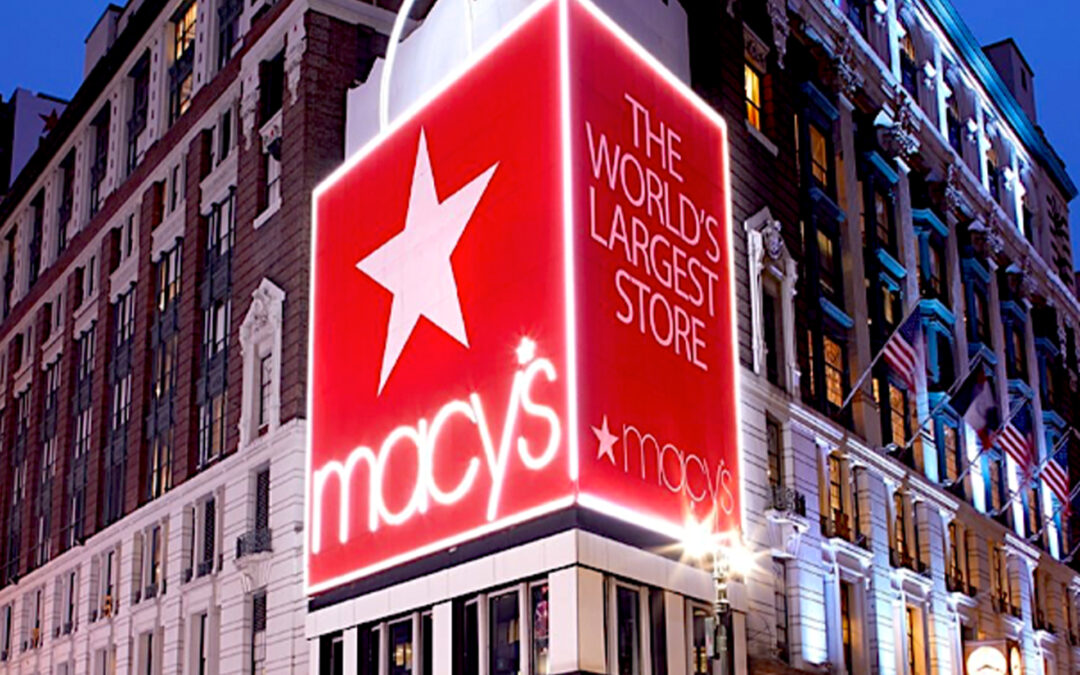As holiday retail sales forecasts begin to flow in, it will be worth keeping an eye on trends that have become more pronounced during the year to get a sense of where the sales season is taking retail and the housewares sector.
The year has been ripe with contradictions. Getting out to restaurants and travel was supposed to divert sales from goods from housewares and home furnishings to services. Although that shift is often referenced in discussions about sales, it isn’t that simple.
Shopkick produced one of the earliest holiday sales forecasts. When asked in which product categories they intend to purchase, 55% of consumers said apparel, followed by toys and video games at 44. Home came in third at 36%, tied with electronics and ahead of the hot beauty segment at 23%. That was followed by experiences such as concert tickets, travel vouchers, etc., at 16%, and wellness and fitness at 13%.
Restaurant revenues have been up, with sales in food service and drinking places gaining 8.5% in August year over year and 0.3% from July, versus 1.6% and 0.6%, respectively, for the retail trade, according to the United States Census Bureau in its monthly retail sales assessment. Although furniture and furnishing stores saw month-over-month and year-over-year declines, major housewares sellers did better than the average, with non-store retailers flat from July but up 7.2% year over year in August. General merchandisers were up 0.3% from July and up 2% year over year despite the department store sector, considered a part of the larger general merchandise category, gaining 0.3% from July and declining 3.4% year over year.
In looking at food services and drinking places, sales look strong, but a study by Revenue Management Solutions of quick service restaurants also reveals that things are more mixed than they might appear from the overview. After a major month-over-month rise at the beginning of this year, traffic at quick service restaurants has been up and down, declining through early spring, rising again, then falling in July before reversing a bit in August. However, year-over-year traffic slipped 1.8% in July and 0.5% in August. Despite a strong traffic increase in January from December, the month was still down 0.4% year over year.
For quick service restaurants, strong increases in average check drove sales, a number that’s still growing although at a lower rate, with inflation in food costs remaining a critical influence. In its second-quarter consumer survey, RMS noted that menu prices are up and consumers are aware of it. The consultant and business services provider noted that the number of respondents who plan to eat at restaurants more in the future was less than 20% for all channels, including dine-in, drive-thru, takeout and delivery.
So, although not definitive, the larger picture produces some evidence for solid sales of housewares and other home furnishings as the year ends.

Holiday consumer shops online.
Consumer confidence, not at its highest levels, also delivers mixed but not necessarily bad prospects.
In 2023, a split in consumer confidence has occurred not between groups but in outlook. Near-term consumer confidence numbers are fair. With a 100 reading the dividing line between a positive and negative economic assessment, the Conference Board Confidence Index was an upwardly revised 108.7 in August from a downwardly revised 114 in July but slipped to 103 in September. However, the breakdown of the overall number throws a spotlight on the divide. Based on consumer assessment of current business and labor market conditions, the Present Situation Index slid from 153 in July to 146.7 in August, then gained in September to 147.1, remaining well into positive territory.
At the same time, though, the Expectations Index, based on consumer outlook for income, business and labor market conditions six months out, declined to 83.3 in August, reversing July’s sharp gain to 88, then fell again in September to 73.7. Expectations had held just a bit above 80 for the two months, with sub 80 being the level that historically signals a recession within the next year and one that the Expectations Index fell below consistently earlier in 2023.
Six months earlier, in March, the Expectations Index rose to 74 from 70.4 in February, even as the Present Index reached 151.1, down from 153 in the month before. The overall index actually ticked up in March to 104 from 103.4 in February. The contrast between the expectations and present assessments is worth considering, especially in light of a recent National Retail Federation finding.
The annual survey on the Halloween holiday conducted by NRF and Prosper Insights and Analytics determined that Halloween spending should reach a record $12.2 billion in 2023, exceeding last year’s record of $10.6 billion. Halloween is among the holidays when consumers could most easily reduce spending. However, with the job market still strong and wages having been on the rise, they are shelling out more dollars for Halloween this year, something they might not have envisioned doing in March given their six-month outlook.
Again, nothing is certain, but at least trends through the summer suggest that the year-end holidays shouldn’t be too gloomy, barring a sudden unforeseen economic shock.
High Hopes
Although some holiday forecasts predict that wary consumers could reduce holiday spending significantly, not everyone is of that mind. Ware2Go, a UPS company, found that 73% of small and mid-sized merchants expect higher holiday sales compared to previous years. In its second annual Peak Season Prep report, responding retailers revealed a positive but pragmatic outlook that sees opportunity in the months ahead based on more robust demand forecasting but recognizes that capitalizing on it will take some doing.
As such, 93% of responding retailers said they have made significant adjustments to their peak season planning. Holiday preparation for retailer respondents includes establishing a more dynamic promotional calendar for 84%, longer sales cycles for 52%, steeper discounts for 39% and earlier promotions for 28%.
Import trends this year support the proposition that retailers see opportunity as the year ends. NRF and Hackett Associates said U.S. ports covered in their Global Port Tracker report handled 1.91 million TEU, defined as one 20-foot container or its equivalent, in July. Volume gained 4.4% from June but still was down 12.4% year over year. July was the most recent month when port numbers were current, but although ports had not yet reported August final numbers in early September when Global Port Tracker last published numbers, the report included a projection of two million TEU total volume, down 11.4% year over year but the first month since October 2022 to reach the two million mark. Expectations for September are for import volume to reach the two million mark again and stay there for October, which should see the first year-over-year volume gain in many months, although at a modest 0.1%% rate. Year-over-year gains, as anticipated, will be stronger in December and November.
Expectations didn’t quite live up to the numbers projected when August came in at 1.96 TEU, short of the two million mark, with projections for September and October revised to 1.94 TEU. Yet, Global Port Tracker still projects the first year-over-year TEU gains in November when the forecast now calls for 1.91 million TEU, up 7.5% from the month in 2022, and in December at 1.88 million TEU, up 8.9% from the month in the year prior, which all suggests retailers are concerned about consumer spending but keeping imports flowing based on still relatively positive assessments.
Recent homeowners who took on the big redecorating and furnishing tasks may want to purchase products such as dinnerware, storage items and home products that dress up the household for the holiday season. They also might be looking for items to fit out secondary spaces, such as attics and garages that haven’t yet been organized. And they might be looking to upgrade small appliances, electric floor care and other products that no longer suit their lifestyle needs.
In 2023, as the year has proceeded so far, a cautious optimism might seem warranted, but the road ahead won’t be smooth. The housing market, which is often tied to housewares and home furnishings prospects, hasn’t been stellar, although the relationship isn’t linear. Then, the bolstering effect of pandemic-era government economic support initiatives is petering out.
Joe Derochowski, home industry advisor at Circana, said it is important to consider influences outside of retailing, particularly the return of student loan payments and their potential to tie up money that might otherwise be spent on goods and services.
The softer housing market looms, too, but that doesn’t mean it’s all bad for the housewares sector.
“Home sales have slowed, but with new homeowners who bought in 2020 and 2021, there may be an opportunity,” Derochowski said.
Recent homeowners who took on the big redecorating and furnishing tasks may want to purchase products such as dinnerware, storage items and home products that dress up the household for the holiday season. They also might be looking for items to fit out secondary spaces, such as attics and garages that haven’t yet been organized. And they might be looking to upgrade small appliances, electric floor care and other products that no longer suit their lifestyle needs.
Pets are another opportunity that is ongoing as consumers tend to treat dogs, cats and other creatures more like members of the family deserving of regular upgrades of everyday items such as beds and feeding bowls, not to mention holiday presents.
Although innovative products that better suit consumers as their lifestyle needs evolve is central, it is also important to innovate on new ways to win mind share and to inspire usage.
Circana is forecasting 2023 housewares and small appliances to be down 4% in dollars versus 2022 but up 17% versus 2019.
Scott Benedict, affiliate partner at consultancy McMillan Doolittle, said that the renewal of student loan payments is one of those present considerations that’s not easy to weigh but is bound to make an impact as the year rolls along.
The effect is inevitable given “the sheer amount of dollars that it is going to pull out of the market for consumers to spend,” Benedict said. “The year so far has been surprisingly positive and retail sales have been surprisingly resilient to what was a worrisome mindset going into the year.”
An Oxford Economics report indicated that repayment of student loans after the period of forbearance instituted by the federal government in response to the COVID-19 pandemic would take about $9 billion a month in spending out of the U.S. economy.
Starting Early
Another important consideration is the effect of the ongoing attempts by retailers, recently driven by Amazon, to pull holiday shopping back further into the calendar year. Walmart has been a long-time proponent of early holiday shopping, once launching and promoting its now defunct layaway program in late summer to get consumers into the gifting mood. When Amazon announced it would launch its holiday-oriented Prime event, dubbed Big Deal Days to distinguish it from the summer version, other major retailers lined up their own earlier bargain initiatives. Target not only opted to run its Circle Week of deals from October 1 through 7 but also launched a pre-event that kicked off September 24.
Benedict said the October sales events have added another element of uncertainty about holiday sales in an economy still dealing with the ramifications of pandemic shutdowns and resulting supply chain issues. He said monitoring responses to the fall promotions is important as they inevitably weigh on the prospects for traditional major shopping events, including Black Friday and Cyber Monday. Although the early promotional events are the product of major retailers, any weakening of Black Friday weekend sales and perhaps even those in the week before Christmas will force most retailers to reconsider how they want to work the holidays in the short term, prompting adjustments to their 2023 plans, and in the long term as they look for where their opportunities lay in the extended sales season.
Although they will have an impact, early season promotions, as they have run over the past couple of years, haven’t ravaged sales from the Black Friday to Cyber Monday stretch, with digital sales seeming to experience the lesser impact. Whatever the case, their ability to generate interest signals that the biggest retailers will be even more capable of defining how the holiday season will evolve.
“I still think the Cyber Five, those five biggest days of online sales from Thanksgiving through that Monday, will still be the biggest online shopping days of the year,” Benedict said. “But there will be some mitigation to the effect that demand will be pulled forward into October by Amazon, then Walmart and Target reacting to those things, and by specific retailers who have got too much or too little inventory. Those that have too much will be more aggressive, those that have too little a bit more passive, and the puts and takes of all that feel like the biggest retailers seem to be in the best shape. Walmart is in great shape.”

Target Circle Week Deals
Benedict also thinks sales trends in the pandemic and recently could favor home goods to at least some effect in this holiday season. The pattern of investing in the home in worrisome economic times was well established during the Great Recession and the pandemic.
Indeed, in a recent conference call, Ted Decker, Home Depot chair, president and CEO, said the company had seen an uptick in small projects such as those accomplished in the recession. The pandemic saw additional spending to make living spaces more efficient and entertaining, with investment in consumer electronics and outdoor living particularly conspicuous. Benedict said that consumers who might want to consider spending less outside the home, as the RSM analysis suggests, could turn to incremental household purchasing to enhance their lifestyles while sheltering their finances.
After all, consumers have been spending some of their pandemic-accumulated savings – with Federal Reserve Economic Data putting the savings rate in July at 3.5% after it peaked for 2020 in May at 4.7% and for the five years at 338% in April 2020 – and are under pressure from inflation, student loan repayments and high-interest rates, particularly those associated with credit cards.
Given the lesser price points versus consumer electronics and big-ticket home improvement projects, Benedict said, housewares may look like a comparable bargain to consumers who might be staying in more, particularly after the so-called pandemic “revenge traveling” is over. The revenge travel phenomenon that took shape the past couple of years was on the mind of consumers in 2023 and might have even accelerated in the first months of the year as travelers searched for and booked trips despite the fact that the typical cost of a journey has increased, according to the NerdWallet Travel Price Index. More people have been flying abroad this year than was the case in 2022, particularly to destinations in Asia, Oceania and Europe, with twice the number of travelers jetting to those geographies year over year. However, inflationary trends may put the brakes on the phenomenon as the price of a typical trip rose 9% in the first quarter of 2023 as hotel prices jumped 19% between December and March, airfare prices were up 10% compared with 2019 and car rentals were 53% more expensive than they were that year. In June, the Conference Board reported that vacation plans in the year’s second half continued to flag.
Under those circumstances, consumers might be preparing to cocoon again, and housewares could make that a comfortable experience as consumers build on the behaviors they adopted in the pandemic regarding cooking, cleaning and bartending.
“In home appliances and housewares, maybe they didn’t invest in those things as heavily during the pandemic,” McMillan Doolittle’s Benedict said. “Could they benefit from, ‘Hey, we didn’t invest as much and those tickets are more palatable, and maybe there are some neat new products?’ Folks who are in the replacement cycle might help in the sector.”
In home appliances and housewares, maybe [consumers] didn’t invest in those things as heavily during the pandemic. Could they benefit from, ‘Hey, we didn’t invest as much and those tickets are more palatable, and maybe there are some neat new products?’ Folks who are in the replacement cycle might help in the sector.
– Scott Benedict, Affiliate Partner, McMillan Doolittle
Ethan Chernofsky, senior vice president of marketing at Placer.ai. also cautions the upheaval in the economy over the past three years makes interpreting from trends a dicey proposition, particularly under the impact of inflation.
As in other cases, the effect is more complicated in its details than an overview reveals. Chernofsky pointed out that lower-income consumers are changing their spending patterns the most under the influence of inflation, inevitably so, with less disposable income available, but their ability to make major adjustments is limited because they already are bargain and discount shoppers. Middle-class consumers are only marginally affected, so any change in spending is likely to be light. Upper-income consumers may have the most divergent spending patterns as they are the ones most likely to travel and spend money outside the U.S., affecting in-country luxury spending.
Nothing in the economy happens in a vacuum, and, in addition to the extraordinary events that often command attention, cyclical events are kicking in, with Gen Z coming into its own as consumers and Millennials finally settling in as homeowners and often raising a family. Still, the Great Recession and pandemic have molded how younger consumers think about the economy and their finances. So, the idea of a new normal emerging might be wishful thinking, at least at this point in time. Still, the response of Gen Z consumers to the present holiday season is something worth watching.
Product Power
In uncertain times, Placer.ai’s Chernofsky said, “the power of product” becomes more relevant, and he means product in a broad sense. However, by his definition, mid-2023 offers conspicuous examples of product-pulling sales.
At a time when wariness is used to describe consumers in reference to spending, observers have asked why consumers are so willing to rush out and spend money on Beyoncé and Taylor Swift concerts or even going to see “Barbie.” And it’s not only ticket prices. People aren’t just buying tickets. They are also outfitting themselves based on what they will see, even if it’s just picking up something pink for when they go to see “Barbie” on the big screen.
Chernofsky rejects the premise that divides merchandise and experiences spending in its basic form. He said consumers don’t think in terms of category, even if retailers and their suppliers do. They don’t get up in the morning and ask themselves, ‘Do I want to spend money on merchandise today or an experience?’ In essence, it’s all product.
“Consumers care about product,” Chernofsky said. “Not that long ago, there were people who thought people didn’t want to go to the movies anymore. Why would they ever want to leave their houses? They can watch everything on Netflix. People went out, got dressed up, wore pink and went to see the movie. They went to see “Oppenheimer.” Please tell me why a biopic about a scientist is all of a sudden driving all this intense visitation. Nike and LuluLemon aren’t winning because they’re in athleisure, they’re winning because they have great products. Great products drive dollars.”
In housewares, the growth of robotic floor care is an example of a product satisfying a consumer desire and building sales as a result. It’s likely that other products will catch the imagination of consumers as they shift into holiday shopping mode, which could afford a perspective on how trends will tend as the year ends and 2024 begins. Social media can provide a window on which products are likely to be hot in the season and an early sense of direction in the market based on what’s popular on Instagram and TikTok, particularly for younger shoppers.
Today, retail also applies the term experience in another way. Chernofsky said retailers are interested in creating experiential elements to engage consumers who want a more entertaining interaction online and in stores. They often look to accomplish this by linking core operations with social media and influencers, including livestreams, or even exploring new virtual vistas as Walmart has done with Roblox in the metaverse.

Analysts say holiday shoppers will seek a more satisfying retail experience.
Chernofsky maintains that “retail experience” is a separate and more general consideration, and those that deliver it should continue to maintain the loyalty of customers and draw more, including in the holidays when shopping can become a chore.
He said, “Experience is: Does the visit contribute to my shopping happiness?”
The difference indicates a key point.
“Someone said this once, and I thought it was brilliant: Experience isn’t experiential; experience is walking into Rolex, they take out a mat and they put on gloves, they put the watch very carefully on the mat, they’re wearing a suit, and they call you sir. That’s experience. That’s experience retail,” Chernofsky said.
The white glove approach isn’t appropriate for every retailer, especially those in the mass market. In that case, a contrast that might be good to consider is the one between convenience and experience and how they are evolving. Experience doesn’t have to be fancy. Warehouse club members who take time to visit the stores do so not because shopping at Costco, for instance, is glamorous but because of the satisfaction they get from putting that big barrel of mustard in their oversized shopping cart, Chernofsky said. The same can be said of off-price retailing, a channel that continues to grow despite selling off racks and making only modest efforts online. The good feelings associated with seeking out and finding bargains support both retail channels, offering consumers similar but separate experiences to their preferences.
Convenience As Engagement
Something to look at through the end of the year is how experience and convenience retail is evolving. Many retailers want to add experiential elements in stores and online. However, observers said that doesn’t necessarily mean they are becoming experienced retailers. Target, for example, has an ambiance many people prefer to other mass-market retailers. But the company doesn’t break the mass-market mold established by supermarkets and retailers such as Woolworth in the last century. The Target store experience, if a little neater and airier, isn’t fundamentally different from the competition. Over the past couple of years, like its competition, Target has heavily emphasized convenience operations, purchasing Shipt to do delivery and reconfiguring its stores to make them an integral part of its shopping fulfillment network. In Target’s fourth-quarter conference call, CEO Brian Cornell pointed out that what the company calls same-day services were major areas of investment for the company in 2022. The investment continued in 2023 as the company built out its network of sortation centers with the goal of operating at least 15 by the end of 2026 so it can provide faster delivery to major markets in the United States, with the newest, its 10th, recently debuting in Miami.
The company noted that the expansion of convenience or same-day services at Target is in response to the new reality of hybrid work. Another of Target’s biggest 2022 investments was in store remodels, demonstrating the company continues to see value in growing brick-and-mortar retailing, and it is adding experiential and incremental operations to its stores as further engagement elements, as in its addition of Ulta Beauty and Disney shops.
At the same time, Target understands its customer base is fragmented and not as many consumers can drop into a store on the way home from work or at least not as often. In the same conference call, Michael Fiddelke, Target CFO, said, “Many of us are spending a lot more time working at home, which has implications for long-term buying patterns in multiple categories, most notably, our food business. Fulfillment mix has also seen a permanent shift. Our same-day services have seen explosive growth. They now account for more than half of our digital sales and more than 10% of our total sales. And that trend shows no signs of reversing. Even as people have remixed their trips in favor of in-store shopping, guest engagement with these digital services has continued to grow on top of the huge expansion that’s occurred over the last few years. Most importantly, our guests’ overall engagement with Target has increased significantly over the last few years, and it continues to grow.”
In the holidays, how retailers promote their in-store experience and convenience services will provide a sense of how they could tailor operations in 2024.
As the most intense shopping period of the year arrives, developments that have gathered steam over the past year and longer could become more important than expected.
That said, developments do seem to suggest housewares and perhaps even some home furnishings segments could do well enough in the holidays. Among its investments that hit home as the holidays loomed, Target introduced Figmint, a new kitchenware brand that launched with more than 250 items ranging from pots, pans and mixing bowls to utensils, gadgets and food storage. The collection includes enameled cookware, ceramic mixing bowls, acacia wood cutting boards and kitchen gadgets, with prices starting at $3 and more than half coming in under $10. So, Target is counting on the housewares shopper during the holidays. Even the retailer is making a purchase easy from the price perspective. Developments suggest it may be on to something, but also that the company is best served by not getting too far ahead of itself.





